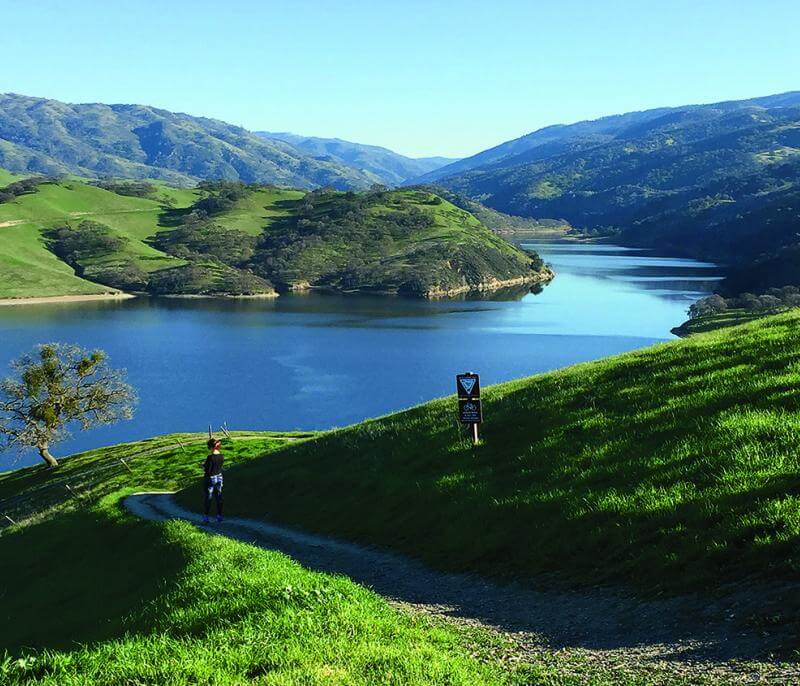Cyanobacteria, also known as blue-green algae, are bacteria naturally found in most water bodies.
When conditions are right, cyanobacteria can rapidly multiply, forming a bloom in water. These blooms can be green, blue-green, white, or brown in color and may be suspended in the water column or look like a floating layer of scum or paint floating atop the surface. They can also have an unpleasant odor. Blooms can occur at any time, but are most common in summer or early fall.
The Park District routinely monitors its lakes for blooms and toxins. The best way to avoid possible exposure is to pay attention to signs posted in the parks. Many types of cyanobacteria are capable of producing toxins. When and why they begin to make toxins however, is still unknown. The presence of cyanobacteria does not always mean toxins are present. Detection of toxins involves testing water samples in the lab. Blooms may begin to produce toxins at any time, so always use your best judgment.
Exposure to toxins can occur through skin contact, inhalation, or ingestion. Acute exposure symptoms include allergic reaction, eye, nose, mouth, or throat irritation, stomach cramps, headache, vomiting, diarrhea, or fever. The long-term effects of exposure to toxins are not well known. Seek medical attention immediately if you think you or your child has been exposed to cyanobacteria toxins.
Dogs are more susceptible to acute exposure of cyanobacteria because of the large amount of water they ingest while swimming. If your dog does come in contact with a bloom, rinse them off immediately so they do not lick the cyanobacteria off their fur. Monitor them closely and if any symptoms appear, seek medical attention immediately.
The Park District closely monitors all blooms. If toxins are detected, specific signage is posted according to trigger levels based on modified guidance from the Water Board’s California Cyanobacteria Harmful Algal Bloom Network (CCHABs). Because dogs have a greater risk of exposure, a lake may be closed to dogs before it is closed to swimming. Once the toxins have dissipated, the Park District works with local health departments to determine if a lake is safe to reopen.
An Advisory sign is posted when the lake is safe for human swimming, but may be harmful to dogs. When an advisory is posted, keep your pets away from the water and make sure to rinse off as soon as you are out of the water. Avoid any scums or mats of cyanobacteria. When a lake is Closed, the toxin levels have a higher potential to get humans sick. If you see a Danger/Closure posting, avoid any contact with the water.
YES! Fish from our lakes are tested annually for toxins and tests have shown toxin levels are acceptable for fish consumption. Avoid any unnecessary contact with the water and wash your hands after handling fish or wet equipment. Always wash fish fillets thoroughly with tap or bottled water and discard the guts and liver.
The Park District has taken many steps to help manage blooms. A few of the techniques used include, application of coagulants to reduce available nutrients and hydrogen peroxide based algaecides to kill cyanobacteria, physical removal of filamentous algae to increases the effectiveness of other treatments, and long-term maintenance solutions such as dredging and oxygenation to enhance water quality.
It is important to be on the lookout for signs posted at lakes or on the website and follow any recommendations listed on the sign. If you see a bloom, stay out of areas where the water has foam, scum, or mats of algae and keep pets away from the water. Dogs should not drink from waters with cyanobacteria. Do not drink or cook with water containing cyanobacteria. Even if you boil or filter it, the toxins can persist.
See a bloom and no advisory signage? Call Water Management to report it at (510)544-2328.
To see the latest advisory postings, visit the Park District's Blue-Green Algae webpage.
If you or your pet are exposed to cyanobacteria, rinse off with fresh water as soon as possible. Monitor for any unusual symptoms and seek medical attention immediately if any occur.

